#csp animation is kinda confusing
Explore tagged Tumblr posts
Note
teru chan.... what if....what if like....i chew on you like.... like nyam nyam nyamnyamnyamnyam
[warning: LOUD] i think it would b more like that
34 notes
·
View notes
Text
yeheheahahahahhahah >:)

decided to make a quick animation in csp this is the second time I made an animation in csp because it's kinda confusing tbh O_o
105 notes
·
View notes
Note
hi tamelee!
I'm here to ask for a little bit of advice if that's okay (: about a month ago I bought a Wacom drawing pad so I could start experimenting with digital art. artists like you here on tumblr have really inspired me to start making art. but I feel kinda.. lost. I've been mostly drawing naruto manga caps and I'm getting better but I guess I don't know where to go from here. coloring and shading scares me lol. I'm using clip studio paint and it's just a little.. intimidating. I feel discouraged, like I won't be able to do it. how did you do it tamelee? did you watch a lot of tutorials, or did you experiment until you figured things out? any advice you'd have for a beginner artist I'd really appreciate.
thank you veryvery much for your time ^^
Hi Nonee! 🧡 Sure!
Oh I think that’s a very good place to start. As well as drawing subjects you like ^^! Hmm, tbh I’ve just experimented a lot, but I don’t think my way of having done things was the most efficient. You might want to follow tutorials step by step? You can try coloring only with flat colors until you feel a bit more confident with that as well as cell-shading (toon-shading/non-realistic, like in anime) instead of rendering further as that can all be confusing at first. I personally never truly understood shading until I studied cell-shading and made my art a lot more readable. A lot of Anime uses this;
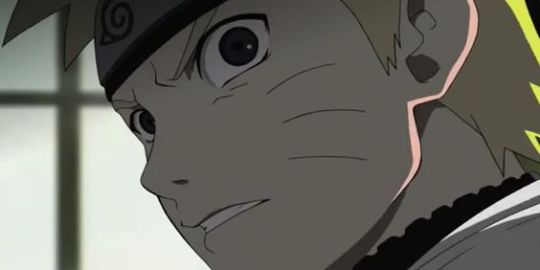
You see how there is a base color, a darker color for shadows and highlights? (Sometimes not even highlights.)
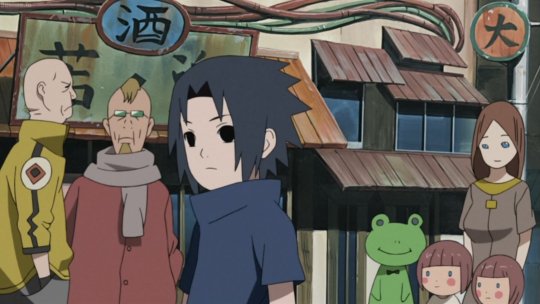
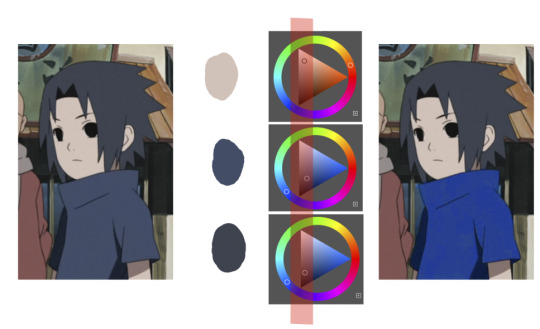
When you start to study it from existing work you’ll start to notice things like color always being in the same area of saturation and when you suddenly have a color that is way more saturated than the other it can look off. (See example.) But this is a guideline, not a rule. In your own art you can especially use saturation and brightness to help aid you to direct a viewer's focus and even tell a story.
I LOVE ‘How to train you dragon’ and ‘Kung Fu Panda’ for this because their coloring is so inspiring and if you truly want to learn from professionals... well those are the type of media to look for of course! I have an entire folder to inspire me just based on those.

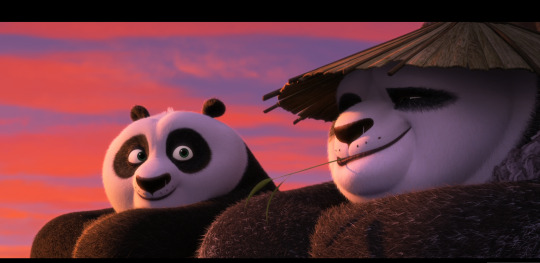
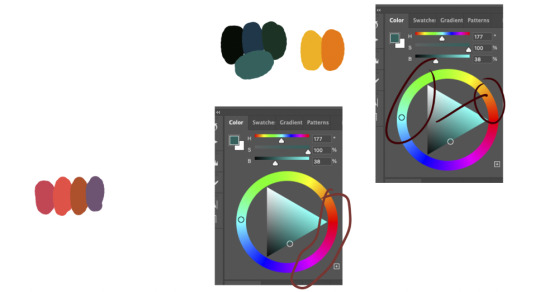
Do you see how calculated those color combo’s are?!?! Here you see both analogous and complementary schemes and it is actually through looking at the things I like that I learned it >< The orangey colors stand out and are bright which helps you to focus on that area whereas the complimentary scheme is used to bring characters together.
If drawing Manga-caps is something you love to do, then maybe for coloring you can study screen-caps from Anime or even other animated films. I’d recommend to take it step by step, though I haven’t really applied it myself, from the video’s I’ve seen and artists I’ve followed it is always advised to have an art-goal that you can work toward. Maybe you first want to focus on lineart and then laying down a base color where the colors are harmonious and next would be cell-shading maybe and then you can start adding another light-source etc- eventually you can decide to create more depth or practice with monochromatic coloring, maybe even greyscale to learn values. But right away that can all sound a bit intimidating doesn't it? Find things that you like and then maybe you can open them in your program and just study. Find a brush you like, put on some music or a show on the background and for a moment play around with it without needing to create a finished piece. This is also how I learned how things like adjustment layers work or what all the different kinds of tools do. I have to agree with you, CSP is intimidating for me as well >< so this is kinda how I approach it as there are so many add-ons and additions within it but I try to only learn what I need for that moment so I don't overwhelm myself. I definitely try to find video’s that can help me with creating Manga though! ^^ There are plenty! It'll get easier eventually, you'll learn the program and you start to recognize placements for shadows and you will get a feel for the coloring- no worries 💪 Learning something new will always stay intimidating, every time I open up a new document I feel it too. It's not easy at all, but you kinda have to allow yourself to experiment and even make mistakes because practice is never perfect. I have some beginner tips written here- I hope any of this is somewhat helpful 🌷🫶
16 notes
·
View notes
Note
i love your art style so much! i completely forgot that i’d followed you, but i saw once of your klance comics on my dash and thoughts it was sooo good! 😋 anyway i’ve been going through your blog all morning and it’s just so amazing and your art style is so cute! i would literally buy comic books from you! anyway, i do traditional art a lot and haven’t really gone into digital, but i kinda really want to nowadays.. any advice for just starting out? (tablet suggestions, marketing, etc.) 😊
Hello and thank you so much for the compliment! It’s going to be a while since a lot of planning, writing and drawing needs to be done before I can print the comics, but I’m happy to hear that you would buy. ^^
Advice about starting digital drawing….there’s so much this post could become a novel! But I guess I’ll start from the main thing: software and tablets.
Software
Okay, so, there are a lot of different programs for digital drawing and it might take a while before you find the one that works for you. Most artists that I know of either use Photoshop, SAI, CSP, or Procreate. As of now and for the last 3 years, I’ve been using Clip Studio Paint (CSP for short) for both my digital illustrations and animation. CSP is kind of like…a Mac version of SAI if that make sense? There’s so much to the program but it’s not as daunting as Photoshop. Also! Right now, they’re having a Black Friday Sale, so, the program cost only $25 for the whole weekend. It’s far more affordable than Photoshop and you can do the exact same stuff without having to take out a loan or something haha. Also, Photoshop isn’t and was never meant for digital drawing since it is originally a photo manipulation program. You can still use it for digital drawing if that what suits your tastes, but SAI and CSP are specifically made for digital drawing so the interface, brushes, and all that stuff were made and designed for the digital drawing. However, SAI is only for PC users. If you’re a Mac user (like me), I would recommend CSP. But if you don’t have money, there are free programs as well! Medibang and Krita are free drawing programs and are just as good (and I would argue good dupes) for SAI and CSP. I would suggest trying out the free programs before making a purchase for CSP, SAI or Photoshop though. Going from traditional to digital is an odd feeling so it’d be such a waste if you spent money and found out that digital drawing isn’t for you, ya know?
Tablets
Alright! So, here’s the thing about tablets: buying the most expensive one isn’t always the right choice. There are plenty of tablets that are far more affordable than a Cintiq. Also, you’re only starting out so I would never advise to go out and buy a $1000+ tablet when you don’t really know if you like digital drawing yet. My first tablet was a Bamboo tablet by Wacom and it was only $100 (at that time). I would suggest buying a small tablet like the Wacom Intuos Small or a Huion since their prices normally are under $100. There are some mid range ones ($200-$300) like the Intuos Pro and XP-PEN that perform just as well as a Cintiq but I wouldn’t buy those unless you were really starting to think about working as a digital artist.
For digital artists, tablets are an investment. I currently own a Cintiq 13HD and iPad Pro but one is for personal use (iPad) and one is for work (Cintiq). Since I mainly do computer animation and digital illustration as my job, I needed to get a tablet that performed better than my small Bamboo Intuos. Also, I needed one in order to improve my workflow and efficiency. So, don’t go out and buy a Cintiq. Try out a smaller tablet. Or even better, if you have any friends who have drawing tablets, ask them if you can try them out and see if you like the feel of it.
Tips/Advice for Digital Drawing
Okay so I’m just list off certain things I’ve learned along the way that I wish I knew when I first started digital drawing haha.
1. Take the time to learn your drawing program. Learn the interface, the hot-keys, shortcuts, tools and customize it to your liking for optimal efficiency.
2. Use references! It’s okay to use references!
3. Don’t compare yourself to other artists. You’re only just starting so it’s not good to compare yourself to someone who has had more experience at digital drawing than you. You’re going at your own pace and that’s okay.
4. Your first drawings are going to be bad, and that’s okay. Sometimes you gotta make a hundred bad drawings before you get a good one.
5. Be willing to try out new techniques and different methods.
6. Flip the canvas while you draw, don’t wait until you’ve finished the drawing. Flipping the canvas can help find inconsistencies.
7. Layers are your friends! You have friends, right? You know their names, right? So how come you don’t remember your layers’ names? Label your layers so you don’t end up sketching on the wrong layer!
8. This is if you own a Cintiq (or something similar): If you’re right-handed, customize and put all your hot-keys and shortcuts on the left-handed side of your keyboard. If you’re left-handed, put it on the right side. Efficiency boosted by 1000%.
9. Have fun! Draw what makes you happy!
Lastly….marketing….well, I don’t really do that? Ah, it’s one of those things I’m not sure what to say cause even I don’t know if I’m doing it correctly haha. Or at all. But if you’re looking to establish a following centered around your art, I noticed there are 2 types of digital artists: the one that solely makes original content (OCs and their own stories) and the other one that makes fanart. Now, there are a variety of different digital artists. I’m just saying these are the most 2 common types I see. I’ve noticed…that if you make fanart…you’re more likely to gain traction faster. Since fandoms are such a huge thing now on social media, it’s easier for your art to get noticed if you draw fanart from a popular show, movie, game, etc. However, this doesn’t mean that if you don’t draw fanart you won’t build a following. In fact, there are tons of artists who solely create their own original content and hardly draw fanart but have a following that’s 10x bigger than mine. It really comes down to what you want to do. Actually, you can do whatever you want as long as you are enjoying it haha. If drawing fanart makes you happy, go for it. If drawing your OCs makes you happy, go for it. Personally, I love drawing fanart cause I enjoy creating scenarios and comics of my favorite characters outside of canon. I do have OCs and stuff, but I hardly post them cause they’re a bit more personal (and also I think no one would be interested in them haha). But yeah…I just think you should draw and make work that you enjoy cause that attracts people to your work. Sorry, that was a really long and confusing(?) answer but I hope that helps you haha.
63 notes
·
View notes